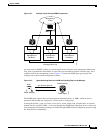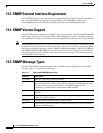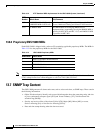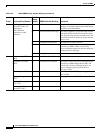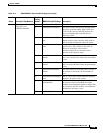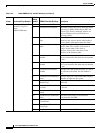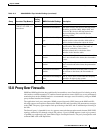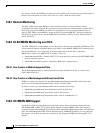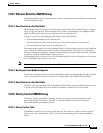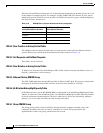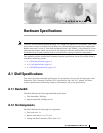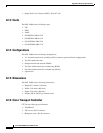
13-11
Cisco ONS 15600 Reference Manual, R7.2
Chapter 13 SNMP
13.8 Proxy Over Firewalls
13.8 Proxy Over Firewalls
SNMP and NMS applications have traditionally been unable to cross firewalls used for isolating security
risks inside or outside networks.CTC enables network operations centers (NOCs) to access performance
monitoring data such as RMON statistics or autonomous messages across firewalls by using an SNMP
proxy element installed on a firewall.
The application-level proxy transports SNMP protocol data units (PDU) between the NMS and NEs,
allowing requests and responses between the NMS and NEs and forwarding NE autonomous messages
to the NMS. The proxy agent requires little provisioning at the NOC and no additional provisioning at
the NEs.
The firewall proxy is intended for use in a gateway network element-end network element (GNE-ENE)
topology with many NEs through a single NE gateway. Up to 64 SNMP requests (such as get, getnext,
or getbulk) are supported at any time behind single or multiple firewalls. The proxy interoperates with
common NMS such as HP OpenView.
F All other traps (from
CERENT-600-MIB) not
listed above
(1) cerentGenericNodeTime The time that an event occurred.
(2) cerentGenericAlarmState The alarm severity and service-affecting status.
Severities are Minor (MN), Major (MJ), and
Critical (CR). Service-affecting statuses are
Service-Affecting (SA) and Non-Service
Affecting (NSA).
(3) cerentGenericAlarmObject
Type
The entity that raised the alarm. The NMS
should use this value to decide which table to
poll for further information about the alarm.
(4) cerentGenericAlarmObject
Index
Every alarm is raised by an object entry in a
specific table. This variable is the index of
objects in each table; if the alarm is
interface-related, this is the index of the
interface in the interface table.
(5) cerentGenericAalrmSlot
Number
The slot of the object that raised the alarm. If a
slot is not relevant to the alarm, the slot number
is zero.
(6) cerentGenericAlarmPort
Number
The port of the object that raised the alarm. If a
port is not relevant to the alarm, the port number
is zero.
(7) cerentGenericAlarmLine
Number
The object line that raised the alarm. If a line is
not relevant to the alarm, the line number is
zero.
(8) cerentGenericAlarmObject
Name
The TL1-style user-visible name that uniquely
identifies an object in the system.
(9) snmpTrapAddress The address of the SNMP trap.
Table 13-5 15600 SNMPv2 Trap Variable Bindings (continued)
Group Associated Trap Name(s)
(Variable
Binding
Number) SNMPv2 Variable Bindings Description



